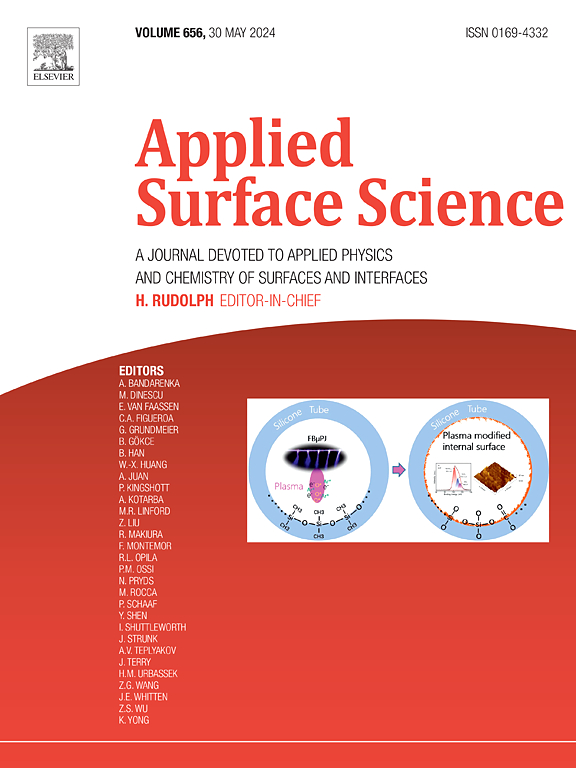Degradation of pollutants by electrically activated peroxydisulfate with Cu-FeOCl/MWCNTs-COOH/PTFE electrochemical membranes
IF 6.3
2区 材料科学
Q2 CHEMISTRY, PHYSICAL
引用次数: 0
Abstract
Cu-FeOCl catalyst loaded onto Carboxylated multiwalled carbon nanotubes-polytetrafluoroethylene membranes (MWCNTs-COOH/PTFE) by high temperature pyrolysis to form Cu-FeOCl/MWCNTs-COOH/PTFE electrode. The Scanning Electron Microscope results show that the surface of the material shows a layered structure with large specific surface area. And it can be observed by X-Ray Diffraction, X-ray photoelectron spectroscopy and Fourier Transform Infrared Spectrometer that the doping of Cu affects the energy bands and crystallographic changes among other elements. Degradation of 98 % was achieved by electrically activating peroxydisulfate and sequestering sulfamethoxazole (SMX) in the flow system, and 92 % within 60 min in the immobility reaction. The flux of the membrane against bovine serum albumin and the recovery of the degradation rate after cyclic flux testing were also explored. In addition, the electrode is applied to the degradation of pollutants in the muddy water. Through the synergistic action of anodic oxidation and cathodic activation of PDS, active species such as hydroxyl radical (![]() OH), sulfate radicals (SO4
OH), sulfate radicals (SO4![]() −), and superoxide radicals (O2
−), and superoxide radicals (O2![]() −) are generated in the reaction system, accompanied by the generation of high valence metals in the anode. Fe-Cu bimetallic catalysts for electrochemical activation of PDS for pollutant degradation is a feasible and efficient material.
−) are generated in the reaction system, accompanied by the generation of high valence metals in the anode. Fe-Cu bimetallic catalysts for electrochemical activation of PDS for pollutant degradation is a feasible and efficient material.


Cu-FeOCl/MWCNTs-COOH/PTFE电化学膜电活化过硫酸氢盐降解污染物
通过高温热解将Cu-FeOCl催化剂负载到羧化多壁碳纳米管-聚四氟乙烯膜(MWCNTs-COOH/PTFE)上,形成Cu-FeOCl/MWCNTs-COOH/PTFE电极。扫描电镜结果表明,材料表面呈层状结构,具有较大的比表面积。通过x射线衍射、x射线光电子能谱和傅里叶变换红外光谱仪可以观察到,Cu的掺杂影响了其他元素之间的能带和晶体学变化。通过电活化过硫酸氢盐和在流动系统中隔离磺胺甲新唑(SMX),降解率达到98 %,在固定反应中,在60 min内降解率达到92 %。并对膜对牛血清白蛋白的通量和循环通量试验后降解率的恢复进行了探讨。此外,该电极还应用于泥水中污染物的降解。通过PDS的阳极氧化和阴极活化的协同作用,在反应体系中产生羟基自由基(OH)、硫酸盐自由基(SO4−)、超氧自由基(O2−)等活性物质,同时在阳极中生成高价金属。Fe-Cu双金属催化剂用于PDS的电化学活化降解污染物是一种可行的高效材料。
本文章由计算机程序翻译,如有差异,请以英文原文为准。
求助全文
约1分钟内获得全文
求助全文
来源期刊

Applied Surface Science
工程技术-材料科学:膜
CiteScore
12.50
自引率
7.50%
发文量
3393
审稿时长
67 days
期刊介绍:
Applied Surface Science covers topics contributing to a better understanding of surfaces, interfaces, nanostructures and their applications. The journal is concerned with scientific research on the atomic and molecular level of material properties determined with specific surface analytical techniques and/or computational methods, as well as the processing of such structures.
 求助内容:
求助内容: 应助结果提醒方式:
应助结果提醒方式:


